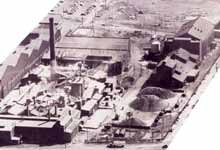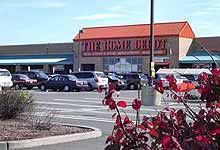The History Behind the Former Roosevelt Drive-In Site
From the early 1900s to 1954, a company called the Mutual Chemical Company operated a "chrome ore" processing plant across the street from 441 Route 440, where the Home Depot is now located. The plant produced chromium products that were used as a key ingredient in stainless steel and in heating and cooling systems. Approximately 40% of the material produced at the processing plant was used to support U.S. military operations during World War II.
From the early 1900s to 1954, the Mutual Chemical Company used Site 441 Route 440 to dispose of a manufacturing by-product called "Chrome Ore Processing Residue" or "COPR" (pronounced "ko-per"). At the time, this was done with approval from state and local governments.
In June 1954, Mutual Chemical closed the plant and in December 1954, Mutual was purchased by Allied Chemical. Later that same year, the site was sold to yet another company. Allied Chemical later became AlliedSignal and in 1999, AlliedSignal bought Honeywell and kept the Honeywell name.
In the 1980s, because of new concerns about the suitability of COPR as fill material and the possibility of adverse health effects caused by a type of chromium called "hexavalent chromium," the state of New Jersey began to investigate COPR sites throughout Hudson County, including this site. Under the federal Superfund law passed in 1980 and amendments to the New Jersey Spill Act passed in 1979, responsibility for these old sites was placed on the companies that created them or with the companies that bought the companies that created them, regardless of who owns these sites now. Because Allied Chemical, now known as Honeywell, bought the Mutual Chemical Company in 1954, Honeywell has ultimate responsibility for this site, even though we did not create the site and have never deposited any chromium on the site.
Honeywell has committed significant resources to environmental cleanups, working closely with regulators, professional environmental and engineering organizations and, most importantly, local communities.

